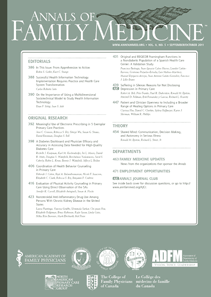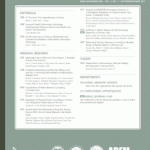 Chemical sensitivity has long been recognised as a viable diagnosis amongst practitioners with a strong interest in environmental medicine, but remains something of a mystery for many others. In the July/August issue of Annals of Family Medicine a paper was published that seeks to provide some clarity of diagnosis and frequency of occurrence.[1]
Chemical sensitivity has long been recognised as a viable diagnosis amongst practitioners with a strong interest in environmental medicine, but remains something of a mystery for many others. In the July/August issue of Annals of Family Medicine a paper was published that seeks to provide some clarity of diagnosis and frequency of occurrence.[1]
Chemical sensitivity (intolerance) is defined as an unusual degree of sensitivity to common environmental chemicals, such as cleaning products, tobacco smoke, or perfumes. The authors of the current study provide a review of the epidemiology of chemical intolerance. The prevalence of chemical intolerance is 2% to 13% in population-based surveys, and the onset is usually after age 30 years. Patients with chemical intolerance usually report symptoms in multiple body systems, and chemical intolerance is associated with increased use of prescription medications.
Diagnosis they suggest is something that rarely happens and if a simple questionnaire was employed – such as the Quick Environmental Exposure and Sensitivity Inventory (QEESI) then people previously extrapolated via their presenting symptoms to fall into frameworks established for the diagnosis of depression, generalised anxiety or alcohol abuse may be correctly extracted and treated accordingly. You may download a copy of the QEESI questionnaire.[2]
After controlling for demographics, the researchers found that patients in the chemically intolerant group were more likely to have poorer functional status and to demonstrate a trend toward increased use of medical services when compared with non–chemically intolerant patients. Once psychiatric disorders were accounted for in the evaluation, however, the one remaining significant difference between the 2 groups of patients was that those with chemical intolerance experienced limitations of social activities.
Patients who are chemically intolerant use health care services at increased rates (making an average of 23.3 visits to a medical professional per year). In addition, chemical intolerance is associated with poor quality of life and functional impairments leading to loss of employment and socioeconomic hardships, write Dr. Katerndahl and colleagues.
Socioeconomic status (SES) is also a prime component of frequency – as is being female. The lowest prevalence of patients with chemical intolerance (9.1%) was seen among patients in the highest SES group, and the highest prevalence of patients with chemical intolerance was seen in the lowest SES group (24.7%); the difference between these 2 groups was significant (χ2, 8.20; P = .04).
The researchers hypothesise that the increased prevalence of chemical intolerance among patients in the low-SES group may be related to their occupations, which may increase their exposure to:
Solvents, cleaning agents, pesticides, and other substances now clearly linked with the development of chemical intolerance and associated neuropsychiatric symptoms, via a process referred to as toxicant-induced loss of tolerance.
The authors, citing earlier research, offer suggestions for the care of those with chemical intolerance. First and foremost, avoidance of known chemical triggers is recommended. The authors also advocate for evaluation of psychosocial factors that may be contributing to chemical intolerance. Using nonpharmacologic approaches to treatment is important, per the researchers, because chemical intolerance often includes the inability to endure medications and medical materials.
Dr. Katerndahl and colleagues report data that show benefit from a
Comprehensive, holistic, multidisciplinary treatment program ranging from “lifestyle changes and nutritional supplementation to mindfulness-based stress reduction, physical therapy, group learning, guided imagery, and psychotherapy.
Terminology
* Semantics in this area are a minefield. In this article, the authors use chemical intolerance to describe the loss of prior, natural tolerance to common foods and drugs that occurs in a subset of individuals, sometimes after an initial exposure, such as to pesticides or a “sick building.”
Various authors have used toxicant-induced loss of tolerance (TILT) and idiopathic environmental intolerance (IEI) to describe this phenomenon, depending on whether the intolerances began after an identifiable initiating event. The advantage of the term intolerance is that it presumes no particular mechanism. In contrast, researchers in addiction and neurology use sensitisation (eg, neural sensitisation or time-dependent sensitisation) to describe heightened responses after repeated exposures to a drug or chemical.
On the other hand, allergists and immunologists have objected to using the word sensitisation to describe the heightened responses to chemicals in these individuals in the absence of evidence that their responses are immune mediated (ie, mediated by IgE). In this article, the authors use chemical intolerance and multiple chemical sensitivity interchangeably because the literature they used cite uses both terms, and the clinical picture appears to be the same, namely, multisystem symptoms and adverse responses to structurally unrelated chemicals, foods, and drugs. Further, this phenomenon is widely reported under multiple diagnostic labels in the United States and more than a dozen industrialised nations.
References
[1] Katerndahl DA, Bell IR, Palmer RF, Miller CS. Chemical intolerance in primary care settings: prevalence, comorbidity, and outcomes. Ann Fam Med. 2012 Jul;10(4):357-65. View Full Article
[2] The Environmental Exposure and Sensitivity Inventory (EESI): a standardized approach for measuring chemical intolerances for research and clinical applications Miller CS, Prihoda TJ. Toxicol Ind Health 1999 Jun;15(3-4):370-385. View Full Article





